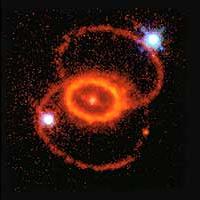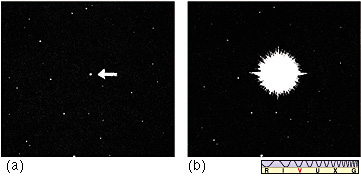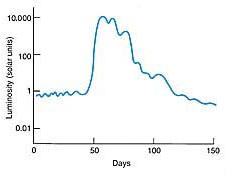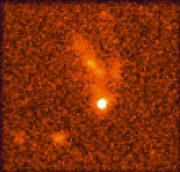 |
Supernovae: Rate
of Occurrence
- How often do we see one? We
expect to see about 1 per century in our galaxy, but the actual
rate varies; Active (starburst) galaxies can have 1 in 2-3 years!
- Historical ones: The only recorded
ones were in AD 185, 386 & 393 (Chinese records), 1006, 1054
(the "guest star" in Taurus, several times as bright
as Venus, visible in the daytime for at least 23 days, produced
the Crab Nebula), 1181, 1572 (Tycho's SN in Cassiopeia), and
1604 (Kepler's SN in Ophiuchus); A less noticeable one occurred in 1667
or 1680, and its remnant is Cassiopeia A; No naked eye ones, except SN
1987A in the LMC, in more than 400 years!
- Previous ones: Nearby stars (e.g., in
Scorpius-Centaurus, 130 pc away) have had supernovas within the past
few millions of years,
which have affected chemistry
on Earth and and damage
to the ozone layer; One in particular has left evidence in 2.8 Myr old
soil layers, and may have affected human evolution.
- The next ones? Sometimes we can tell
that an explosion is "about" to happen; Should we monitor
massive supergiants past the main sequence? Are they dangerous?
One less than 25 ly away would extinguish most life on Earth;
One that is waiting to happen is eta Carinae, but it is 7500
ly away.
- Star monitoring: Many galaxies
are now being monitored, to learn more about supernova explosions,
and be able to identify the pre-explosion stars.
|




_206x180.jpg)

![]()